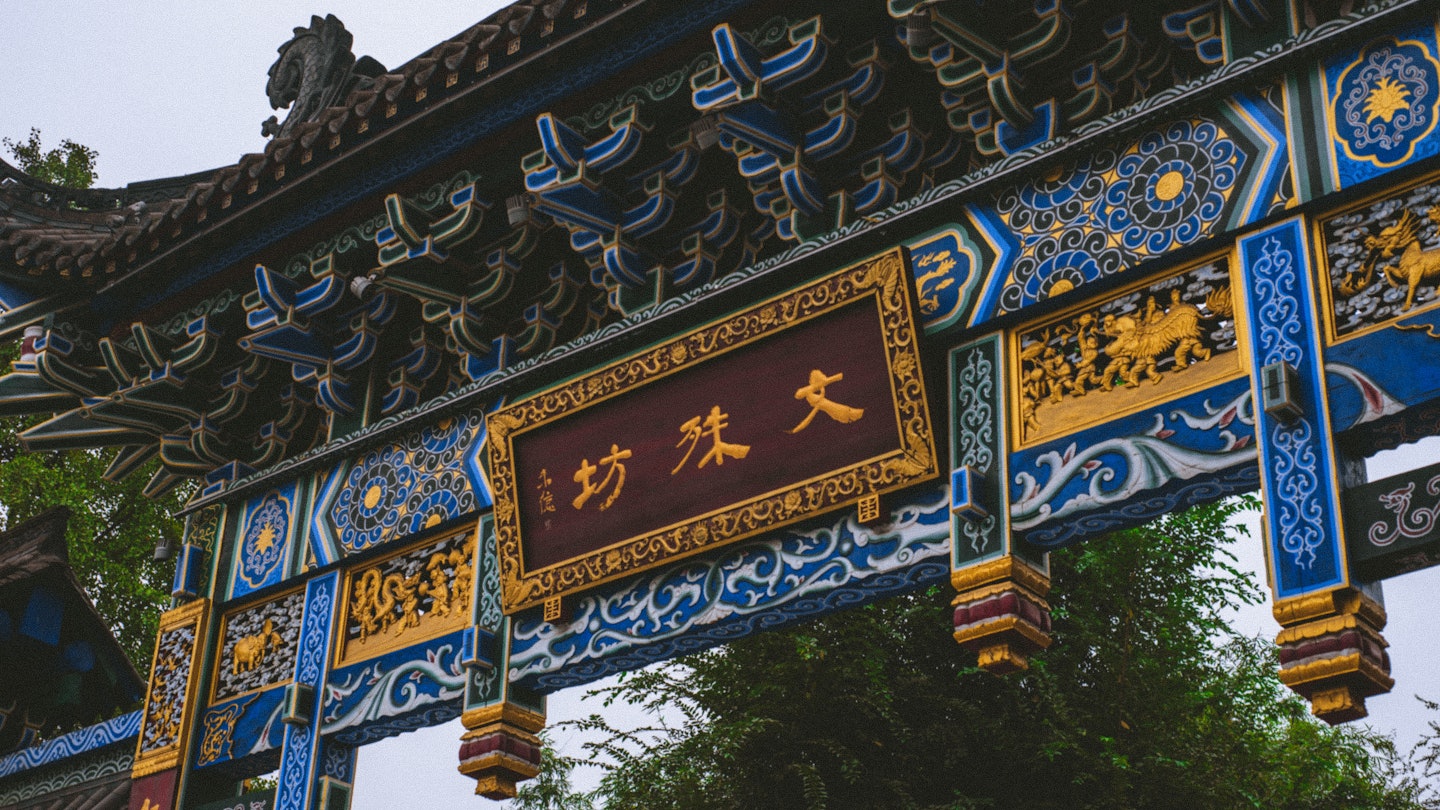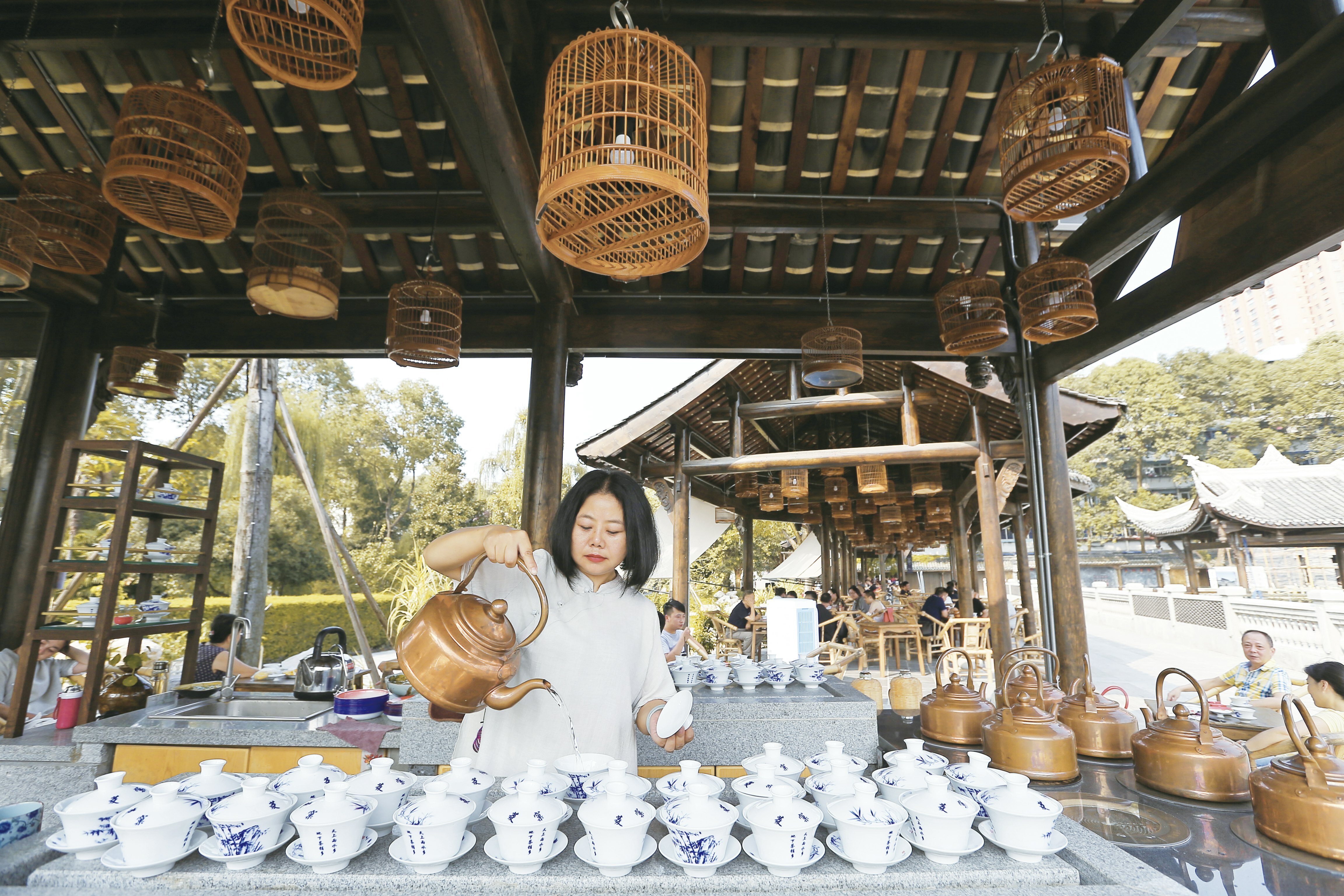
See where old meets new in forward-thinking Chengdu
Sponsored by
Aug 19, 2021 • 5 min read

Wenshu Monastery, Chengdu’s largest Buddhist monastery, is dedicated to the Bodhisattva of Wisdom.
Chengdu, the capital of China's vast, southwestern province of Sichuan, is a special city. You feel it the moment you step off the bullet train that whisked you here from the airport. Modern public transport zips you around the streets in air-conditioned, wifi-enabled bubbles, but moments later, you're sipping green tea in a shaded park.
Chengdu is steeped in deep-rooted cultural traditions, showcased in all their glory in the city's magnificent museums, temples, theaters, and parks. But, these traditions somehow fuse seamlessly with Chengdu's fast-paced, modern-day flip side to create a city that's as culturally fascinating as it is visually spectacular.
Museums
Even the manner in which the site of the Jinsha Site Museum was discovered illustrates the intrinsic link between modern-day Chengdu and its cultural past. In 2001, while preparing to build a sparkling new residential complex in the suburbs of the city, a real estate firm stumbled across a drain that contained 3,000-year-old artifacts made of bronze, jade, stone, and ivory; all priceless remnants of the ancient Shu Kingdom, whose capital city, it was revealed, once stood on this spot. But the exquisite artifacts weren't just sent to a museum.

Conservationists decided to turn the location into a viewable excavation site, where glass pathways allow visitors to get up close and personal with the ruins of the ancient settlement while high-tech instruments protect its remains from temperature variations, ultra-violet rays, dust, and damp air. From the outside, the site's main halls boast a futuristic design, with huge, semi-circular, ramp-like edifices of steel and glass, belying the fragility of the relics they protect. And getting to this ancient site could hardly be more 21st-century; Jinsha has its own metro stop, so it's plugged straight into the beating heart of modern Chengdu.
Ancient China truly meets the future, though, at the striking cuboid structure that is the new Chengdu Museum. This showpiece visitor attraction exhibits numerous historical artifacts from around the region, including some of the extraordinary 3,200-year-old bronze masks discovered at Sanxingdui, They are housed inside a dazzling, space-age-like steel lattice building that now forms the western edge of Tianfu Square, the city's historic center, and the location of Chengdu's iconic statue of Mao Zedong. However, with international architecture firms battling to win new design contracts across the city, this spectacular museum will soon be just one part of fresh and sparkling Chengdu, parading crystalline skyscrapers, sweeping 'infinity' bridges, and fully-automated metro stations. The Chengdu Museum isn't just a window into the region's remarkable history; it's also a tangible vision of the city's exhilarating future.

Parks in Chengdu
Across China, parks form a vital part of modern city life, as they're a chance for locals to step off the busy streets and switch down a gear or two. But despite often being located in the center of modern metropolises, they are also places where old traditions hold strong. People's Park, for example, is the most central of parks in Chengdu, and it's a magical city-center escape. It houses He Ming Teahouse, a century-old establishment where you can while away an afternoon sitting on a bamboo chair, drinking cups of tea. Culture Park gives visitors a similar taste of Chengdu traditions; you'll see locals practicing water calligraphy, performing taichi, playing Chinese chess, or singing and dancing with friends. And it's sandwiched between Chengdu's oldest Taoist temple, Qingyang Temple, and one of its best opera theatres, Shufeng Yayun.

The top site in Chengdu, though, is the Giant Panda Breeding Research Base, which gives visitors an unrivaled opportunity to meet China's cuddliest and most iconic of national symbols. It is also the world's leading panda research center. Here, researchers use cutting-edge technology and scientific know-how to ensure a flourishing future for China's most precious creature. The panda population is promising these days, and it is largely down to the amazing job this breeding center does. Although it's 11 miles from the central city, getting to the park is a cinch these days. Gone is the frustrating hour-long double bus journey tourists once had to endure; simply hop on metro line 3 to Panda Avenue station (yes, there really is a metro station called Panda Avenue), where free shuttle buses wait to take you straight to the park's entrance.

Temples and Monasteries in Chengdu
Old also meets new in the highly atmospheric Wenshu Temple, Chengdu's largest and best-preserved Buddhist monastery. Dedicated to Wenshu (Manjusri), the Bodhisattva of Wisdom, the air here is redolent with incense, there's often a low murmur of chanting from the prayer halls, and, despite the tourists, the grounds retain a sense of solitude and serenity. This is also a place where you can sample modern Chinese cuisine in the temple's excellent vegetarian buffet restaurant. And outside the temple is one of Chengdu's 'ye-olde' neighborhoods, where modern streets have been made to look like old-China bazaars, filled with street-snack vendors and souvenir hawkers.

Sichuan Opera

Chengdu's theatres, too, have managed to fuse tradition with a modern-day feel. The Sichuan Opera dates back to the 1700s, but in Chengdu, its rigid, often hard-to-follow format has been modernized for tourists, with multi-themed performances incorporating more dramatic forms of entertainment as well as pure opera. So at popular theatres like Shufeng Yayun or Jinjiang Theatre, tourists watch not only short operatic skits, but also acrobatics, shadow puppetry, fire-breathing and, of course, this region's famed bian lian (face-changing), where vividly colorful opera masks are swapped so swiftly as though it was a feat of pure magic, a fitting finale for a trip to the spell-binding, diverse city that is Chengdu.
Sponsored by Chengdu Tourism
As a travel entertainment and inspirational media outlet, we sometimes incorporate brand sponsors into our efforts. This activity is clearly labeled across our platforms.
This story was crafted collaboratively between Chengdu Tourism and Lonely Planet. Both parties provided research and curated content to produce this story. We disclose when information isn’t ours.
With sponsored content, both Lonely Planet and our brand partners have specific responsibilities:
-
Brand partner
Determines the concept, provides briefing, research material, and may provide feedback.
-
Lonely Planet
We provide expertise, firsthand insights, and verify with third-party sources when needed.









